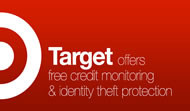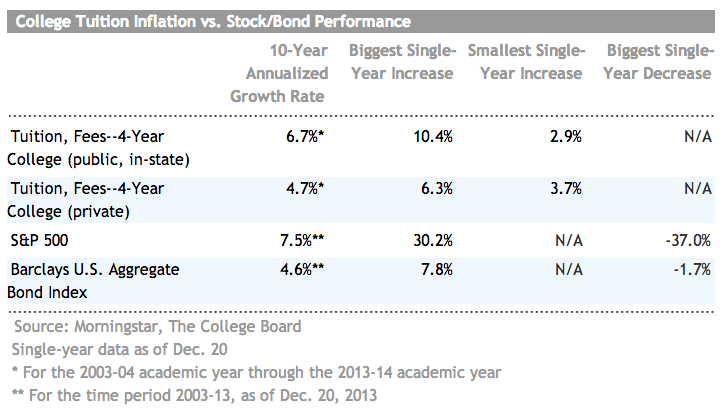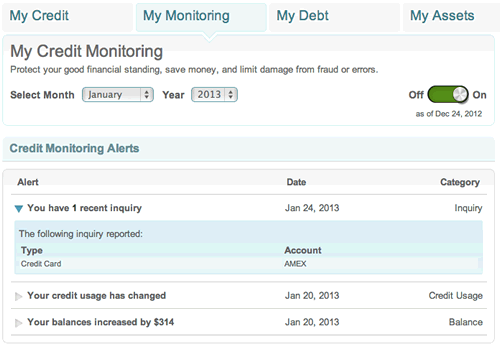It is very tempting to invest in an actively-managed mutual fund that advertises above-average historical returns. Why would you bother investing in the ones with below-average returns? However, there’s something behind the whole “past performance does not guarantee future results” fine print. While there will always be funds that outperform looking backwards, that fact just doesn’t reveal very much about the future.
Index provider Standard & Poor’s publishes something called the S&P Persistence Scorecard twice a year, which examines the persistence of mutual fund performance over consecutive and overlapping time periods. By using quartiles, relative performance is compared, not absolute performance. Do the funds that had top returns in the past continue to have top returns?
The most recent December 2013 study [pdf] reaffirms the general conclusions of many other similar studies on persistence of actively-managed mutual fund performance, namely that it is often nowhere to be found when compared with random chance.
Very few funds can consistently stay at the top. Our studies show that as time horizons widen,the performance persistence of top quartile managers declines. Of the 692 funds that were in the top quartile as of September 2011, only 7.23% managed to stay in the top quartile at the end of September 2013. Similarly, 5.28% of the large-cap funds, 10.31% of the mid-cap funds and 8.15% of the small-cap funds remain in the top quartile.
For the three years ended September 2013, 19.25% of large-cap funds, 20.1% of mid-cap funds and 26.8% of small-cap funds maintained a top-half ranking over three consecutive 12-month periods. It should be noted that random expectations would suggest a rate of 25% and small-cap funds was the only category to exceed the repeat rate.
A good analogy I’ve read is that you don’t drive by only looking at your rearview mirror.
More: Barron’s, Rick Ferri/Forbes
 After losing their customers’ credit card numbers and other personal data, Target is offering free credit monitoring services at creditmonitoring.target.com to anyone who shopped at their US stores. (Supposedly the data breach “only” affected the 70 million people who shopped at US-located Target stores between November 27th and December 15th, but they also seem to be “discovering” more data lost every week.)
After losing their customers’ credit card numbers and other personal data, Target is offering free credit monitoring services at creditmonitoring.target.com to anyone who shopped at their US stores. (Supposedly the data breach “only” affected the 70 million people who shopped at US-located Target stores between November 27th and December 15th, but they also seem to be “discovering” more data lost every week.) 
 The problem with most New Year’s resolutions is that they just take a moment to make but to actually accomplish it you’ll need to re-make that decision hundreds of times. If you’re trying to be healthier, every single day you’ll have to choose the grilled chicken with steamed vegetables instead of the bacon cheeseburger with fries. Walking the stairs instead of taking the elevator. Willpower is like a muscle, and it gets fatigued after a while.
The problem with most New Year’s resolutions is that they just take a moment to make but to actually accomplish it you’ll need to re-make that decision hundreds of times. If you’re trying to be healthier, every single day you’ll have to choose the grilled chicken with steamed vegetables instead of the bacon cheeseburger with fries. Walking the stairs instead of taking the elevator. Willpower is like a muscle, and it gets fatigued after a while.

 Annual reminder for 2014. Want to get back on track for the new year? Here is a list of ways to get free credit reports, free credit scores, and free credit monitoring services.
Annual reminder for 2014. Want to get back on track for the new year? Here is a list of ways to get free credit reports, free credit scores, and free credit monitoring services.


 The Best Credit Card Bonus Offers – March 2024
The Best Credit Card Bonus Offers – March 2024 Big List of Free Stocks from Brokerage Apps
Big List of Free Stocks from Brokerage Apps Best Interest Rates on Cash - March 2024
Best Interest Rates on Cash - March 2024 Free Credit Scores x 3 + Free Credit Monitoring
Free Credit Scores x 3 + Free Credit Monitoring Best No Fee 0% APR Balance Transfer Offers
Best No Fee 0% APR Balance Transfer Offers Little-Known Cellular Data Plans That Can Save Big Money
Little-Known Cellular Data Plans That Can Save Big Money How To Haggle Your Cable or Direct TV Bill
How To Haggle Your Cable or Direct TV Bill Big List of Free Consumer Data Reports (Credit, Rent, Work)
Big List of Free Consumer Data Reports (Credit, Rent, Work)